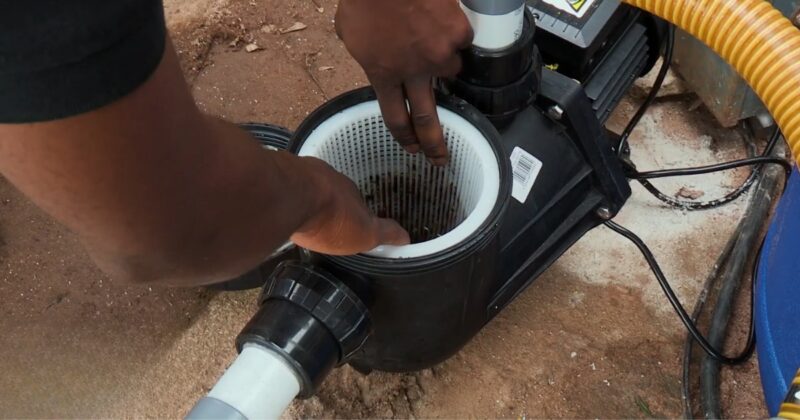Swimming pools are a wonderful luxury, providing leisure, exercise, and a social hub during warmer months. They can also pose environmental challenges, such as significant water and energy usage, and chemical treatments that may affect ecosystems.
If you’re concerned about your pool’s environmental impact, there are effective strategies to minimize its ecological footprint.
Embracing eco-friendly practices helps ensure that your enjoyment of a backyard pool doesn’t come at the expense of the planet. These considerations start the moment you are about to purchase or build a pool. If you are interested in taking a look at some of these, visit this website.
By considering the resources your pool consumes and the substances it releases into the environment, you can implement changes that contribute to sustainability.
Sustainable Pool Maintenance Strategies
To ensure your pool remains a haven of relaxation without compromising the environment, it’s essential to incorporate sustainable practices into your maintenance routines. Here are targeted strategies that cater to eco-friendliness and efficiency.
Choosing Eco-Friendly Pool Chemicals
When it comes to sanitization, eco-friendly pool chemicals can play a significant role in reducing your pool’s environmental impact. Opt for biodegradable options like enzymes, which break down organic contaminants without the pollution associated with traditional chemicals.
Additionally, consider saltwater systems as an alternative to chlorine for a more natural and gentler sanitization method that’s safe for both your health and the surrounding environment.
Water Conservation and Quality Management

Effective water conservation and quality management in your pool hinges on reducing evaporation, enhancing pump efficiency, and utilizing alternative sanitization methods. By implementing strategies across these areas, you’ll minimize water usage and maintain water quality.
Reducing Evaporation with Pool Covers
Using a pool cover is your first line of defense against water evaporation. Evaporation accounts for the significant loss of pool water, leading to increased water usage and energy consumption due to the necessity of heating.
Pool covers not only reduce evaporation by up to 95% but also diminish heat loss and prevent debris from entering the pool, improving water quality and reducing the need for cleaning and chemical treatments.
Benefits of Pool Covers:
- Drastically cuts down water loss.
- Reduces the demand for solar pool heaters or other heating methods.
- Keeps out organic matter that can degrade water quality.
Upgrading to Modern Circulation Pumps
The heart of your pool’s circulation system is the pump, and utilizing variable-speed pumps can lead to considerable energy and water savings.
Unlike single-speed pumps, variable-speed models can be adjusted to operate at lower speeds, consuming less energy for filtration and extending the life of the pump. Pairing a variable-speed pump with a pump timer ensures it runs only when necessary, further optimizing water use and reducing costs.
Circulation Pump Upgrades:
- Save energy by tailoring pump speed to pool needs.
- Automate operation schedules to cut down on unnecessary water usage and energy consumption.
Alternative Sanitization Methods
Opt for alternative sanitization methods like saltwater systems or UV pool sanitizers to maintain water quality while reducing the reliance on chemicals like chlorine.
Saltwater systems convert salt to chlorine in smaller, more consistent amounts, which can lead to better water quality and less irritation. UV sanitizers use ultraviolet light to neutralize pathogens, reducing the need for additional chemical use.
Sanitization Alternatives:
- Offer a more consistent and gentle approach to chlorine generation.
- Use UV light to kill pathogens without extra chemicals.
- Cartridge filters capture more debris and reduce water use by eliminating backwashing.
Energy Consumption and Carbon Footprint Reduction

Reducing the energy consumption and carbon footprint of your pool revolves around two main strategies: upgrading to energy-efficient pool equipment and embracing renewable energy sources. These approaches can lead to significant cost savings while mitigating the impact of climate change through lower greenhouse gas emissions.
Utilizing Energy-Efficient Pool Equipment
To cut energy use and associated carbon footprint:
Replace traditional pool pumps with Energy Star-rated variable speed pumps. These can save up to 70% on your pump’s electricity use by adjusting speed to actual needs rather than running at full power constantly.
- Install solar heaters to utilize the sun’s free energy for water heating. Complement this with solar covers to retain heat, reduce evaporation, and minimize the need for additional energy to maintain water temperature.
Adopting Renewable Energy Sources
To further reduce reliance on electricity and gas:
- A solar heating system harnesses solar energy to warm your pool. It consists of solar panels that collect energy from the sun, which is then used to heat the water, effectively zeroing out your pool heating’s carbon emissions.
- Consider heat pumps as they are more efficient than traditional gas heaters. They use electricity to extract heat from the air, requiring significantly less energy to operate compared to conventional heating methods.
The Role of Eco-Friendly Design and Landscaping

Your swimming pool’s environmental impact can be significantly reduced by employing eco-friendly design and landscaping, including the use of natural filtration systems and aesthetically pleasing sustainable materials.
Natural Filtration with Aquatic Plants
Utilizing aquatic plants in your pool’s design serves a dual purpose. They contribute to a green, eco-friendly pool environment by naturally filtering the water, which can reduce the need for chemical treatments. Specifically, plants such as water lilies can absorb heavy metals and other contaminants. Here’s a simple guide to get started:
- Choose species that thrive in your climate and are known for their filtration abilities, like water lilies and lotus.
- Plant these aquatic species in the regeneration zone, an area separated from the swimming zone where they can grow without disturbance.
Designing for Sustainability and Aesthetics
Your choice of materials can lower your pool’s ecological footprint. Opt for locally sourced, sustainable materials that blend with the natural landscape. These can include:
A visually appealing and sustainable option for lining your pool.
- For decking, local stone limits transportation emissions and complements natural surroundings.
Design your poolside landscape with sustainability in mind. Plant native species that require less water and serve as natural decor. Here are some steps to achieve this:
- Choose plants that naturally grow in your area to reduce water usage and enhance the ecological balance.
- Place plants to provide natural shade, reducing water evaporation and cooling the area passively.
The Bottom Line
Mitigating the environmental impact of your swimming pool need not be an overwhelming task. By adopting some key strategies, you can significantly reduce your pool’s eco-footprint.
Every small action contributes to a healthier environment. Your efforts in creating an eco-friendly pool resonate beyond your backyard, setting a positive example for sustainable living.








